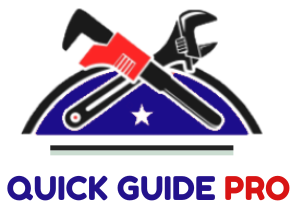Have you just started using a hand router and find yourself uncertain about the right way to use it?
No worry!
I’ve put together this guide on how to use a hand router machine, along with tips to help you get started.
Mastering the router starts with knowing the different parts and how to set up the tool and guide it. So, before explaining the step-by-step guidelines, I like to discuss some basics of this tool.
Let’s started!
What Is Hand Router?
A hand router is a small woodworking tool that you can hold with one hand. These are also called trim routers or palm routers. It is an incredibly versatile portable power tool in any woodworking shop.
This humble tool is available in two versions: Corded electric and cordless or battery powered.
Handheld routers can be fixed base and plunge base.
Fixed Base Routers: On this type of router, once the bit is set and locked, it stays set. The depth is fixed.
Plunge Base Routers: Once you lock the bit on this type of router, you can plunge the bit in and out of the materials.
You can remove the base on a fixed base router, and the bit change is easier than a plunge router.
Many manufacturers offer combination router or multi-base router kits that provide the best of both fixed base and plunge base.
What Is a Hand Router Used for?
You can use this tool to cut grooves, designs, and patterns across multiple pieces of wood.
For example, you can use this tool to trace the outline of a broken table or other pieces of wood.
Besides beveling an edge, this tool is helpful to create all types of edge profiles. You can use this handy tool to square wood edges and as a thickness planer to level uneven wood.
Understanding the Different Parts of a Handheld Router
Whether it’s a big table router, plunge router, or palm router, they all have several of the same features.
Let’s have a look at the different parts of a handheld router in detail:
Router Base
Palm and plunge hand routers come included with a base that fits onto the router body. The base is perpendicular to the router bit.
The removable router base can be tilted. That means you can place the router bit at an angle to the workpiece. You can set the angle of the bit to your workpiece with a thumbscrew on the side. There is also an angle indicator so that you can set it to the correct degrees.
Router Bit
Different types of bits are available that provide you any profile you want. Some of the standard bits are straight, round over, flush trim, and rabbit. Router bit sets are an excellent option to have a variety of bits on hand.
First of all, clean cuts depend on using good quality and sharp bits.
Avoid suspiciously cheap bits which are poorly made from inferior materials.
Router’s Bit Shanks
Bit shanks that fit into the collet are available in two sizes: ¼” and 1/2 “.
¼” size is best for small details like adding decorative edges.
However, a larger size shank helps stabilize the bit under pressure while cutting. It also provides the collet more surface to grab. As a result, there is less chance of the bit coming loose.
It’s essential to know the size of your router’s collet before buying a bit. Fortunately, most models nowadays feature that are interchangeable to allow either ¼” or ½” diameter shank.
The Bearing of Router’s Bit: Top Vs. Bottom Bearing
Some models include a steel bearing on the axis. It lets the bit ride up along the workpiece.
The top bearing is located at the top of the bit (close to the router’s body), while the bottom bearing rides against the surface and trims everything between the shank and the bearing.
Bit Depth
Routers with a plunge feature let the tool be dipped into the work material, and it springs back to a preset distance. Simple models allow you to adjust the bit depth by unbuckling the hasp.
How to Use a Hand Router Freehand
Whether it’s a plunge router, a palm router, or a big table router, they all have many of the same features and all work the same way.
A router is a versatile tool, and you can use it a little differently for each application. So it’s quite tricky to explain how to use it exactly.
However, in this post, I’m covering the basic rules of using this hand tool.
Step 1: Secure Your Workpiece
The first thing you’ll need to do is to secure your material to your workbench.
You can do it in different ways.
First, clamp your material in place. But the disadvantage of clamping your workpiece is it may get in the way of the router. So, you would need to reposition it.
Second, you can use a router mat. It’s an excellent way that provides a non-skid surface. With your workpiece on the mat, you can work around all four edges without any interference.
Third, you can use hot glue too. Add a small quantity of hot glue to the backside of your workpiece and firmly press it down to the workbench.
It’ll let you easily remove your workpiece from the workbench. Additionally, you won’t need much effort to remove the residue of hot glue from the workbench.
Tips:
If you feel that your mat is losing its grip, wash it with clean water so that the specks of dust get out of it.
Step 2: Attaching the Router Bit
Routers feature a threaded neck that the nut and collet fit onto. Attaching or changing the bit is easy.
If you notice below the nut, there is a keyway on the threaded neck. You can hold the threaded neck with a wrench and turn the nut counterclockwise to remove the nut and collet.
Some manual hand routers may have a momentary lock on the side that locks the neck in place. In this case, you won’t need a wrench for the threaded neck.
First, decide which bit you need to use. Then, read the manufacturer’s instructions and install it accordingly.
Typical steps are:
• Unplug your router if it is a corded unit.
• Remove the base.
• Slide the bit into the collet. Set it so that 2/3 of the shank remains inside the collet.
• Tighten the collet with the included wrench. (routers usually come with a wrench for doing this. Overtightening will make the bit very difficult to remove later.
• Install the base back. Adjust the base up and down to set the correct cutting depth according to your needs.
Step 3: Follow the Right Cut
Conventional Vs. Climbing Cut- Which One Is Perfect for Hand Routing?
The conventional cut may deform the material, and it may also dull the tool. In addition, the sliding and biting behavior of the conventional cutting method tends to leave a poor finish on the material.
On the other hand, in climbing milling, the width of the cut starts at the maximum and decreases to zero. But, this cutting method applies larger loads to the router.
So, I won’t recommend it for older machines, or machines which are not in good condition.
Whether you’re using a plunge router or fixed-base router, successful work means achieving clean cuts located precisely where you want them.
For hand routing, I recommend only use the conventional milling method. It prevents grabbing and kickback.
Step 4: Tackle the Edges
A wide assortment of bits is available with which it’s possible to achieve all kinds of edge profiles.
Set the base of your router to the depth desired. I recommend running the router on a test workpiece before starting your project. As a result, you can make the necessary adjustment for depth.
Carefully route until your desired edge profile is achieved. If your cut removes many materials, it’s wise to use shallow passes rather than single passes to achieve the desired depth. It’ll prevent your router from getting bogged down and produce a better cut. Moreover, it’ll also help you to handle your router easily.
Router Feed Direction for Freehand Routing
The proper feed direction when hand routing is clockwise for inside cutouts.
For routing the outer edges, feed the router counterclockwise.
When should you use a router fence?
The bearing (if any) of the router bit assist in guiding the blade based on a reference. But, sometimes, you may need to make a cut where there is no existing reference. In this case, a router fence is useful.
Most of the router bases allow some attachment to install a fence.
FAQs
What Is the Best Hand Router Tool?
When it comes to buying a new handheld router, there is a large selection of different options to choose from. Some models are corded, while some are battery-powered.
Some of the top-notch cordless wood routers for DIYers and Hobbyists are DEWALT DCW600B, 20V MAX XR, Makita XTR01Z, Milwaukee M18 Fuel 2723-20, Bosch 12V Max EC.
What size router is perfect for woodworking?
It depends on your project. A ¼-inch collet router is absolutely fine for light-duty routing.
For heavy-duty projects, you should go for a ½-inch collet.
Can you hand router aluminum?
With the proper bits in place, you can effectively cut aluminum or other metallic materials with a hand router. However, the cutting blades may get dull after several uses. So, you have to use the durable and hard bits. Don’t forget to use proper hearing and eye protection during the process.

I’m Ivan D. Mitchell. I’m the Chief Engineer, Manufacturing Engineering Tool and Launch, specialising in automotive equipment design and build which meets World Class Manufacturing methodology. I have 15 years of work experience as a Tooling Specialist on some of the leading automotive manufacturing companies. When I launched this site, I wanted to create a platform where you’ll get everything about tools in one place. I also wanted to share my experience in the tool industry. I’ll do my best to share the information you need to truly make your tool using experience better. I hope you find our guides, reviews, information HELPFUL. If you have any inquiries, I’m always here to help you.
